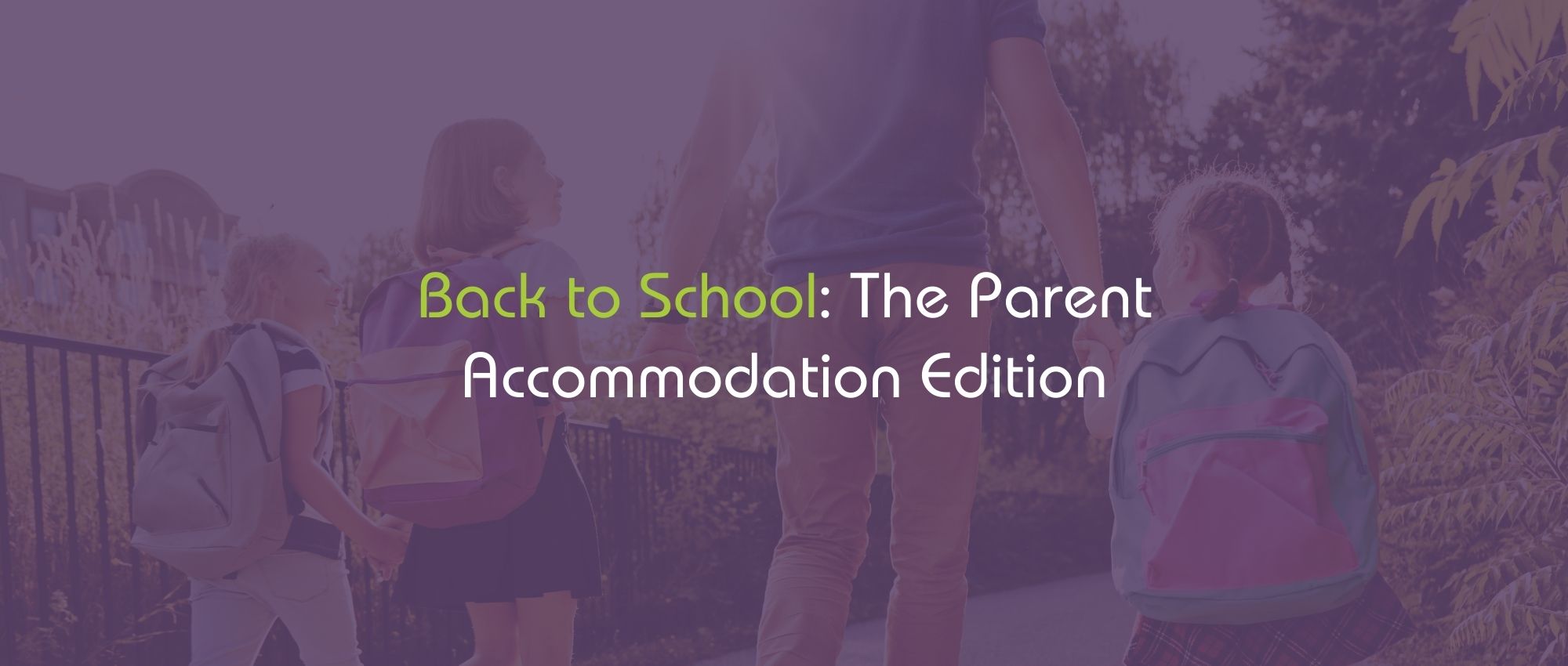
It is understandable that the pandemic caught everyone by surprise and didn’t make anything easier. Parents were not only stressed but some had to watch their child’s anxiety peak as a result of an increase in isolation and decrease in in-person social interaction due to quarantining. Fortunately, schools were able to provide an online platform for students; however, opportunities to be surrounded by friends and family, be involved in extracurricular activities, and foster friendships were lost. For many, these have been the experiences that help foster their ability to interact with others confidently and keep them in practice. As a result, these typical human interactions had to take a back seat in order to keep everyone’s health a priority.
As a therapist, I’ve seen an increase in parents’ concerns about their child’s unwillingness to return to school. Some parents have revealed that their child has become quite avoidant and fearful to do certain things surrounding school such as asking the teacher a question, participating in class, initiating a conversation with a peer, or even inviting a friend from school over to hang out. Some have also shared that ordering food, going shopping, walking their dog, and even inviting a friend over to hang out has become difficult, if not terrifying. Many of their doubts stem from their fear of being negatively judged by others or responding in a way that reveals their worries, also known as social anxiety.
Parent Accommodation:
Parents wear many hats, from unconditionally loving their child to being the one who must enforce the law. When trying to figure out how to help your child return to school, it can be difficult to know what hat to put on as a parent. Do you wear the coaching hat that makes your child go back to school or do you accommodate because their anxiety is too much for them to bare?
When it comes to social anxiety and preparing your adolescent teen returning to school, parents must be educated on parent accommodation and the hats they must wear during this process. Parent accommodation occurs when a parent completes tasks that are developmentally appropriate for the child in order to reduce the distress caused by the task. For example, your adolescent may avoid walking their dog in the neighborhood for fear of running into someone from school and passing judgment on them. As a result, the adolescent avoids the situation. Another example is if your adolescent teen refuses to text one of their friends to hang out because they don’t know what to say or fear that they’ll be busy. As a result, you coordinate the date with the friend.
Accommodating your child beyond what is expected of their age only exacerbates, magnifies, and worsens their anxiety. These accommodations become behaviors that you must now perform for your child, such as constantly reassuring them that everything will be fine, or behaviors that they are not required to perform, such as refraining from speaking to people, teachers, and even friends. Consequently, parents unintentionally reinforce the idea that the situation they are avoiding is actually so distressing; that it necessitates your intervention. As a result, accommodating your child is reinforced because not only you, but also your child, is relieved for the moment. However, until the next situation comes around and you’re in the same spot.
As a parent, it is natural to wear the protector hat and allow your adolescent teen to skip tasks that may seem mundane. It makes sense. The last thing you want is to cause your child distress. However, it is during these opportunities that I advise parents to wear their coach hat. Wearing the coach hat is not always easy and can get confusing. Being a coach is not only assisting your teen with tips and pointers, but also being able to stand on the sidelines and watch them put the playbook into action. The coaching hat necessitates that the parent not rescue their child, but rather allow things to play out naturally on the field. This means that if your child is struggling and is experiencing distress, IT IS OK. It is normal for your child to feel these emotions because it prepares them to navigate these situations and get back on track. The message you want to send to your child is that, while things may appear difficult right now, they are capable of tolerating the stress and, as a result, they are confident because they were able to go through something difficult and still come out ok.
Here are some ways to flip that script, stop accommodating, and foster opportunities to prepare your child to feel more confident returning back to school.
1) Identify all accommodations.
Questions to ask:
- Is this something I do because of my child’s anxiety?
- Does my child become more anxious if I don’t do it?
- Do I feel as if I have no choice but to do this?
- Do most people do this for their children?
- Have I tried to stop?
2) Target accommodations by using supportive and validating statements as a coach.
Do’s:
- Statements should include validation and confidence in your teen’s ability to tolerate discomfort.
For example: “I know this is hard for you. You have gotten through this before and I know you can again.”
Don’ts:
- Avoid being demanding as it can be invalidating.
For example: “There is nothing to be afraid of, stop being silly and scared, just do it”
- Avoid wearing the protector hat.
For Example: “I will make sure everything will be fine and nothing can scare you.”
3) Prepare and address various forms of protests that your adolescent will engage in once they realize you are no longer accommodating them.
4) On to the next target accommodation and repeat.
Remember, the message you want to send to your child is that YOU are confident that THEY can handle their anxiety.

